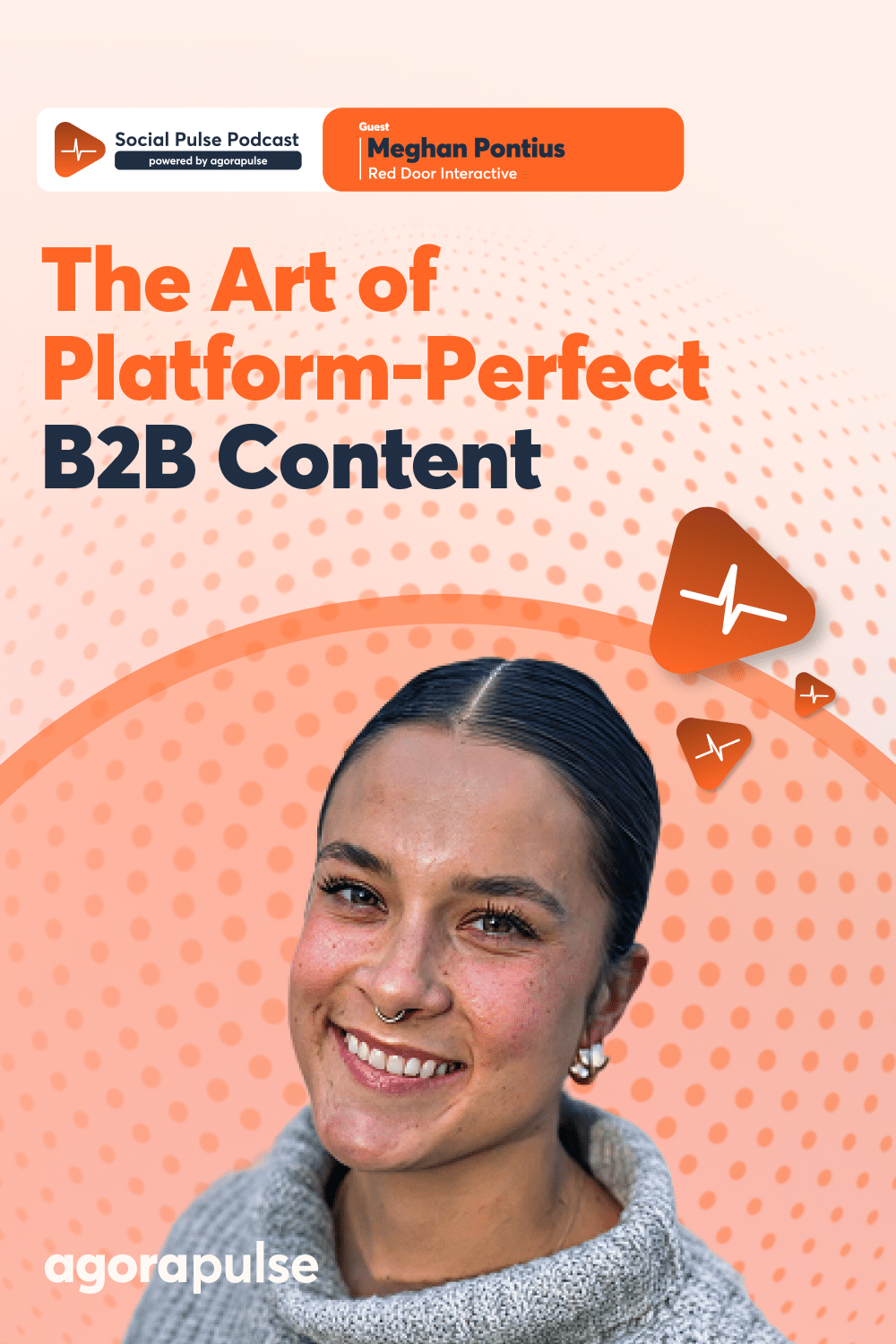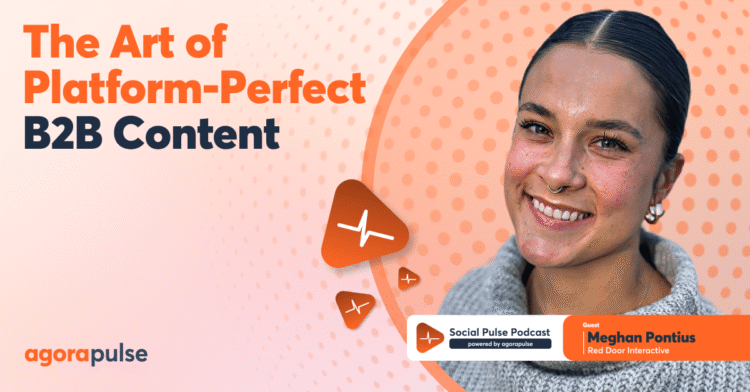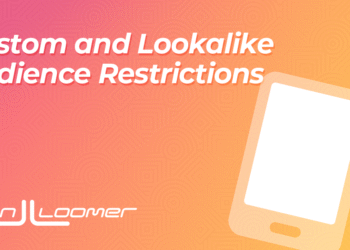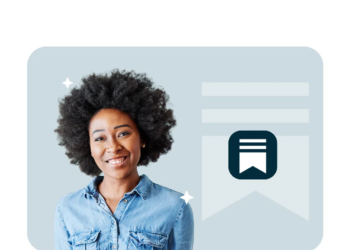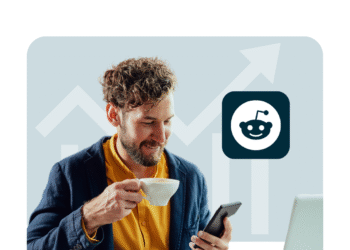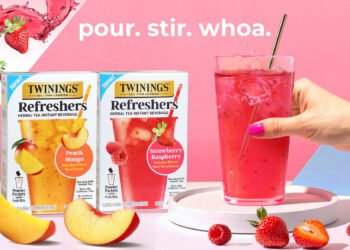Are you tired of posting the same content across all your social media channels, only to see it fall flat on some platforms while performing well on others?
Many B2B marketers struggle with this common challenge: trying to make one piece of content work everywhere, or worse, feeling overwhelmed by the need to create entirely separate content for each platform. What if there was a better way? What if you could learn how to strategically adapt your core message for different platforms while maintaining brand consistency?
Today’s guest has mastered exactly that. I’m excited to welcome Meghan Pontius from Red Door Interactive, who has developed expertise in cross-platform content strategy through her work with numerous B2B brands. As a certified social listening expert and digital marketing strategist, Meghan knows about creating platform-specific content that resonates with B2B audiences while maintaining a cohesive brand message across all channels.
Social Pulse Podcast host Mike Allton asked Meghan Pontius about:
- Platform-specific optimization
Learn how to adapt your core message for different social media platforms while maintaining brand consistency - Content efficiency framework
Discover a systematic approach to repurposing and adapting content across platforms without starting from scratch - Measurement & refinement
Understand how to track cross-platform performance and adjust your strategy based on platform-specific insights
Learn more about Meghan Pontius
Connect with Meghan Pontius on LinkedIn
Resources & brands mentioned in this episode
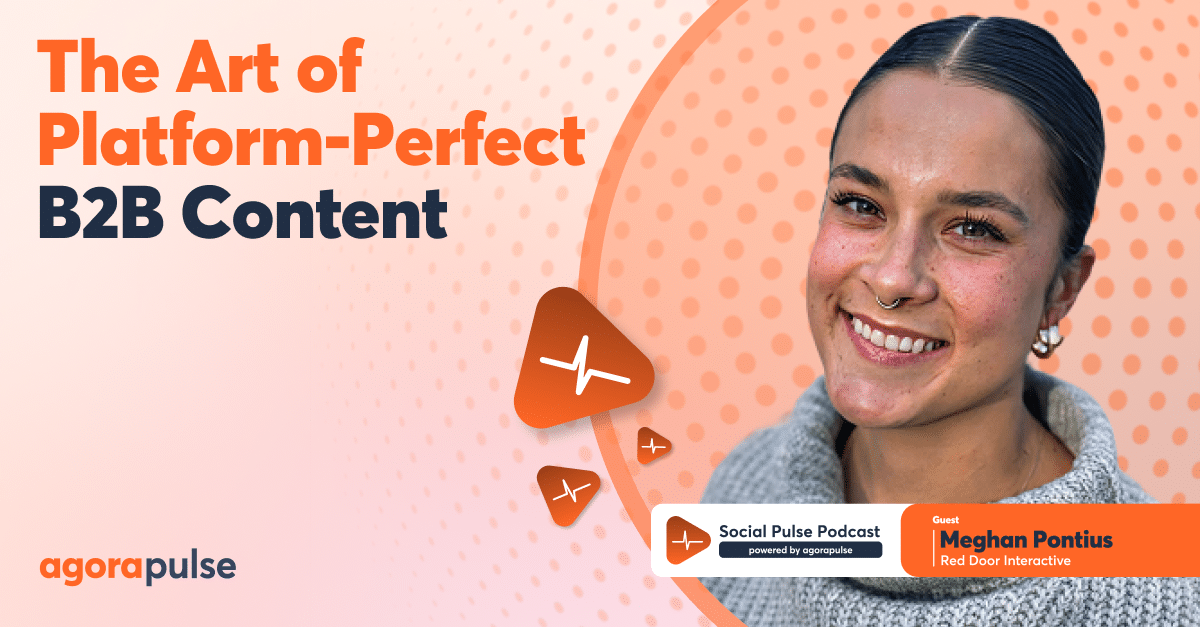
Full Transcript
How did you get into B2B social media strategy, and what led you to think about and focus on a cross-platform content strategy?
Meghan Pontius: Totally. So my social media journey started in higher ed, which, not traditionally, B2B has a lot of overlap, just as an industry in more of the B2B space. It has complexity. You’re speaking to different stakeholders at different times. It’s highly regulated, so with that, I think some of those strategic touchpoints came over into my role now.
But how I got into B2B social media strategy was how we operate at our agency. We have a very lean internal marketing team, and so we leverage subject matter experts across our various teams to create an in-house team. So that’s where a lot of my B2B experience comes into play, which is actually the social media strategy that we do for our agency.
We do have a few B2B clients, but I am knee-deep in agency life when it comes to social strategy, so that’s a little bit of how I got into it. What led me to focus on cross-platform content is probably exactly what everyone would say in this realm: There are just not enough hours in the day. And don’t feel bad! Everyone posts things, and even we do it occasionally, where we throw something up and we’re like, “We should probably change it for that platform, but this is what we have to work with.”
But we’ve been focusing on creating very intentional purposes for our channels, and so you can still use that same core content, but you always want to shape it for what we are trying to achieve with this channel. Now, just for like background, we’re primarily on Instagram and LinkedIn, and I think what’s interesting is people think Instagram’s not a B2B channel, but I think those barriers are down in 2025.
It’s not that Instagram can’t be a B2B channel; we’re all humans, probably everyone sitting in the room is on Instagram at some point in time. It’s just about making sure that you’re reaching their intention, like why they’re on that channel with your message, so that you’re not just shoving something at them that they don’t want. So that’s what I think about when
I think about cross-platform content. It is not necessarily whether the platform is, but whether what you’re serving them meets their expectations when they’re scrolling.
Mike Allton: I think that’s a key distinction. There’s a nuance to what you just said that I want to underscore because I don’t think a lot of people think about it this way.
A lot of people will think about how we might want to tailor certain content for different channels, there is different audiences or different intent, and that sort of thing, but if you put it the way you did, which was to say, “If I’m pushing a content out to a particular channel, that’s not what my audience wants, I’m just shoving it in their faces, and they’re going to tune me out.”
They’re not going to engage with that content, which means they won’t see the next post, even if it’s better, and I think that’s the fatal flaw that a lot of businesses are falling into.
Are there other big mistakes that other businesses are making when it comes to social media and B2B content?
Meghan Pontius: I think there’s a handful. I do think, coming back to reality, what platforms are we on? I think when social media first came up, everyone was like, “Let’s just be everywhere,” then you have TikTok come on, and you’re like, “Let’s get on TikTok,” and there’s this desire to be an early adopter.
But I think now we’re coming to the day that you don’t need to be everywhere. Maybe TikTok just doesn’t make sense for your brand. That’s not to say it’s not a B2B channel; it certainly could be, depending on what your B2B industry is, but just because every platform exists doesn’t mean you need to be on it.
And that’s the first mistake I see is people just wanting to jump into something, or wanting to adopt something, or thinking they need to be everywhere, when in reality, we see a lot of success just from LinkedIn. If tomorrow we said, “Let’s just be on LinkedIn,” I would have no problem with that as a social media manager.
I think the other thing—and we talked about it up at the top—is missing that user intent, so it’s less that you shouldn’t be copy-pasting things across channels, but when somebody gets onto Instagram, they’re in a different mindset than if they’re scrolling LinkedIn. And you might copy/paste the literal words, but how that content shows up has to be much more entertaining on Instagram than it may need to be on LinkedIn. Maybe LinkedIn needs to be a little bit more provocative. It has to get them to be like, “Oh, I never thought of it that way.”
And then coming down, I think all these lead together, but they are the biggest mistake I see is remembering, and I will say it’d be the first to say it’s a hard thing to get past, we are culprits of this too, but it’s content is never one and done. It’s not like I checked a box; I promoted it. There are five different ways to talk about that piece of core content that you created, and there are probably multiple ways to talk about it across each platform.
So, one piece of content could be ten posts, five on LinkedIn, five on Instagram, and it’s such a disservice to all the work that you put into that big core piece of content to post it once and forget about it.
I think all those things together are the biggest mistakes I see companies making when it comes to sharing from a B2B space.
Tell me a little bit about Red Door and the work that you do.
Meghan Pontius: So we’re a fully integrated marketing agency, so I am the manager of the social and content team, so in our nature, we’re very cross-channel in the sense that, even my team owns social media, email, and web content, like blogs. But we offer everything: brand strategy, creative services, web development, SEO. So completely full service, and we’ve had clients from every shape or form, but we are primarily in the higher ed, medical, sports, and active lifestyle industries.
So we have a kind of split, I would say, often of whether it’s B2B or direct to consumer. Because sports and active lifestyle are mostly going to be direct to consumers once you start getting into medical, though, you start getting into things like tech and SaaS and things that are going to be more of that B2B side, so we have a pretty wide range of what we work in.
Walk us through that process. You’ve got one core piece, you’re adapting it for different platforms. What are the factors you consider? How has that worked for you?
Meghan Pontius: Yeah, so we’ve developed, hey, here’s our strategy for our channels and here’s the purpose that they’re going to play, and we’re going to be very intentional with that purpose. And that just helps with spinning on stuff a little bit.
So, the first thing is always identifying where this content fits that purpose. Hey, it’s easy if I’m doing a thought leadership piece, definitely we’re going to put it on LinkedIn. I think where it gets a little bit more “we have to think about it” is on Instagram, because, realistically, what we’re doing on LinkedIn is trying to be a thought leader.
What we’re doing on Instagram is more trying to show our core values in our company as the human component of our company, because that is like a big factor in what differentiates us from other agencies, but that doesn’t mean we can’t put thought leadership on Instagram. Can we make it come back to that purpose?
So that’s the number one thing: “Does it fit for the channel?” And that way we know, even if you are on five channels, maybe not every piece gets repurposed to all five channels. Maybe it’s on three and not on two, so I think that’s the very first important step, because while that gets a little bit away from “How do I repurpose it?” Can save you some time and effort of “Maybe I just shouldn’t be repurposing this for this channel because it’s just not aligned with my goals.” Then, as I said before, I’m going to take a step back to define that user intent on that channel.
I’ve said we’re going to promote it on LinkedIn and Instagram. I need to put myself in, like if I’m promoting it on LinkedIn, what does it need to do to stand out to somebody? Stop that scroll, I’m sure everyone’s heard of that. But what we do next is, “Where are we going to stop the scroll in this specific place?” And that’s what I mean by user intent. What’s going to captivate somebody when they’re in that app? Why did they open it at that moment, on that day? And how can your content kind of capture their attention?
Then what you do is you have to actually come back to the content and figure out what the key moments within that content are, which then get back to that intent and that channel purpose. So I think a good example is like on LinkedIn, everyone’s on there, they’re on there probably in a mindset of doing something for work, they’re there intentionally for thought leadership, and that doesn’t mean you can just throw up anything bland. You have to have an opinion, a perspective, that’s what’s going to capture somebody.
So I’m going to scan that content for, “What perspective is that we have here? How can I pull out five, instead of just pulling out one that’s going to give me the thread for making multiple posts and whereas vice versa, if we’re on Instagram, okay, we’re trying to highlight our core values. What within this content does that? What are our core values? Where does that shine? Even though this is a thought leadership piece, where can I pull that out?”
And then I think for format, that’s where you can have a little fun. “Okay, on LinkedIn, what’s working now? On Instagram, what’s working well now?” And I feel like we’ve gotten into the space in social media where we’re like, forget the algorithm, we’re trying to skip beyond the algorithm to try to reach people, and yes, that’s why I started with defining the audience, like how am I going to reach somebody? What’s their goal when they’re on this app? What are those key moments?
But ultimately, I needed to show up, and if the platform’s telling me I’m deprioritizing content that doesn’t have anything original in it, I’m deprioritizing content if you put a link in there, stop doing that. I think that’s important to note is it can also be bigger things, or if you’ve tried a carousel 50 times, that’s excessive. If you tried a carousel 10 times. It’s just not played out for you; stop putting your effort there. It just stops trying to push the square peg into the round hole. Just make it round.
So the next step is to match it. I call it matching it to platform priorities, it is like now I have what I’m going to say, I have how it meets the user, how it helps me achieve my goals, but now I need to say, like, how does it come to fruition? Is it real, is it a carousel, is it a poll? Is it a Story? And, yeah, I think that’s just going to help you with a smarter distribution.
So then from there, like how to get it into a piece of content, and if you asked me this a year ago, it would’ve been such a different answer. We have Custom GPTs all around. The nice thing is that AI has supported this so much that you don’t have to think. I remember the day when I’d have to open up the Word Doc and be like, “Here’s my LinkedIn post, I need to craft a caption. What’s the asset going to be?” We leverage Custom GPT, so we have them built out in our brand tone and voice, and we have them specific to the platform. So, like we have a LinkedIn Red Door GPT, we have a LinkedIn and, Instagram. And it’s going to stay shaping that into platform native, like executions.
And then we’re feeding performance into that to tell it like, keep doing more of this, stop doing this. For most of the visual platforms, it doesn’t quite get you there from a creative aspect, like you still have to have that kind of thought of, “Oh, this would be fun, but for LinkedIn, it can get some stuff going.”
I think from there it’s about coming back to make sure you’re not one and done, you pulled out five key moments, you’ve talked about platform priorities.
Now, just let the GPT make ten posts for you, make five Instagrams for you, and then while it’s working on more of the tech space and the concepts if you need to film some B-roll to go behind it, if you need to go capture somebody on video, you totally can, but at least you’re not starting from scratch in the sense that you’re not setting a script for the video necessarily.
You have the key talking points, and that’s always the biggest challenge for us is getting somebody in front of the camera, we’re busy, people don’t necessarily want to do that.
But for the more visual platforms, which I do recommend for B2B industries beyond when it makes sense, you do need somebody in front of the camera, so it’s not completely that ear copy pasting or that you’re able to copy, paste, and just tweak it. You do have to do some lifting for an Instagram or a TikTok, but luckily, you’ve got a lot of the framework built for you.
Mike Allton: I love those points. I particularly love the use of Custom GPTs. That’s terrific. I did the same thing for all podcasts, the AI Hat Podcast. I’ve got a promoter script and AI assistant that helps me draft the LinkedIn post.
And then what’s cool is it reads the transcript from my podcast interview, and then it creates its own LinkedIn Newsletter. The LinkedIn newsletter by my AI chief of staff is weighing in on its perspective as an AI, on the conversation we had on AI. It’s super fun.
But I’m wondering, because this is the challenge that I often run into, or the tension that I feel I share the same vertical clips, like basically everywhere, and what you’re saying is I shouldn’t because different audiences are going to be looking for different kinds of things, and the same vertical video clip isn’t going to play as well.
If I don’t share it on XYZ, am I missing a potential audience?
Meghan Pontius: Yeah, I think that what if is always like a big question mark. I think where I come from is, yeah, to be fair, if you’re just hitting, let’s say whatever your management tool is, you’re hitting it, and you’re saying, “Clone to Facebook,” I guess that takes no time. So in effect, there is no downside to that, I think.
But to your point, you see that it’s not performing in that sense, and so is it even worth that? Is it doing anything for you? Something that we talk about a lot is, did it hurt you more than it helped you? Because I think you mentioned it at the beginning, maybe somebody scrolls past it, now it’s not even going to be served the next time, and maybe the next thing was something that they wanted to hear about. This is where it gets a little dicey with that. I guess for Facebook, it wouldn’t be an early adopter. Should we be on the channel? Something that we always go to is, “Are there conversations in your realm on the channel?” So, Instagram is a great one for us where we do repurpose thought leadership on Instagram because we see stuff in the UX realm, there are UX tips and tricks, and there are Canva tips and tricks for social media.
But a landscape review of the conversations in your space is going to be super crucial to help you see people just aren’t there talking about that, and that’s not saying that you couldn’t create something. But I do think it’s exponentially harder for B2B to have something like virality, where, oh, now all of a sudden, people are going to be talking about this topic. I have an example from a client that I think is applicable where we had somebody in a med tech space, and they wanted to be on TikTok, and they’re like, “I think we’re going to hit it. It’s going to be great,” but they didn’t want to talk to a consumer. They only wanted to talk because there was a B2C to B play, which is something to consider for some of those channels, but they didn’t want to talk at the consumer level of the consumer. They wanted to talk at the PhD-level with somebody who understands this technology, the science behind it, and everything.
And we did a landscape review, and we’re like, realistically, no one on TikTok is talking about this. It’s not to say it wouldn’t blow up, it’s just you have to think about the consensus that most people are on there, they’re trying to be entertained. If we are going to do something, it should be towards a larger group. So more of that general education for a consumer play, and so I think that’s like what you have to navigate, is it going to hurt me in the future if I send them something that they don’t like, is it even worth my time? Is there a niche in this space for me to play in?
What is it? And that would maybe help steer, “Do I just repurpose that same video clip, or am I taking something else?”
Try Agorapulse for FREE today.
Could you share an example of one of your campaigns about how you adapted that B2B campaign across multiple platforms?
Meghan Pontius: I had a fun example. Hopefully, people like this. Like I said, we do have separate, very intentional purposes for our channel, so we don’t repurpose a ton in the sense that we’ve tried to streamline even our efforts. We used to also be like that, where we just click it, yeah, it’s good. And we were like, we wanted to do something on Instagram, so I think we need to take a step back.
But one thing that we do is, every year we do an annual For the Love of Insights, and we run it on Valentine’s Day, and it’s about audience industry research, and so that is something that we will repurpose to both channels because we host like an event, and so coming back to what’s our purpose on Instagram? Our purpose is to show our culture, our core values. And not only can we show that through the event, but our philosophy behind how we talk about audiences is very much like our core values of marketing.
I’ll talk about both years because we’ve run it for two years now, and we do it, so we’ll do something more traditional, like thought leadership on LinkedIn. We turn it into a white paper. We have a video that you can watch. So it’s a pretty big initiative for us, and we will dissect those predictions for the year. And so we will dissect those out into things like carousels and snippets for LinkedIn? Pretty standard. I think most people are doing that from a B2B space.
What we’ll do for Instagram is we filmed like being in a space, so we’ll do more B-roll behind that, we’ll still do the same insights, but thinking more from, instead of calling them predictions, we’ll be like, get to know your audience this year. So it’s many things like that, I think there are even micro adjustments where we haven’t hit copy and paste on the LinkedIn carousel. We haven’t even just resized the LinkedIn carousel. But it’s all the same education and information. It’s just that we’ve put it over B-roll video to make it more enticing for the Instagram platform.
We’ve shifted our language to be a little bit more colloquial because people are a little bit less formal on Instagram and LinkedIn. We’re trying to hit, maybe not shock and awe, but the idea that we’ve made a prediction, hear it out. Because that will attract somebody, because it feels like something that other people haven’t done. How could somebody else have made the same prediction as we?
So, and then to take it back one year, I think last year what we did was we still did a carousel on Instagram, which I believe that’s because carousels were working well for us at the time, whereas like reels have been doing better for us recently, but we made the insights into Valentine’s cards.
So again, you are increasing the lift of doing that because it’s much harder than just doing one graphic that you resize in Canva with the touch of a button and post it in both places. But it is the core of bringing the idea to the table, and what the information is still there. It’s just like a little extra push to make it appropriate for that channel.
Meghan Pontius: Yeah, we do use Canva, that is our primary content creation tool, just because it is so user-friendly. Someone on my team loves this quote, “We’re like the graffiti artists to the painter.” So that’s what Canva is for us, it is nice because you can resize, and there are templates. I’m sure everyone’s in there.
We also use CapCut for the mobile-friendly video edits, so fingers crossed that doesn’t go away because we’ll have to look for something new.
But, and then, like I mentioned, the Custom GPTs, like those, are a big part of our captioning, our concepting, and bringing, getting that idea for how I’m going to make this work five different ways. GPT is our friend; we don’t have to read in detail every white paper that we put out.
We don’t use any type of content calendaring system anymore. In the past, we used Airtable. We just found it to be somewhat of an unnecessary step, so we’re always about, when we’re looking at, where can we spend our efforts better our efforts better spent creating that Valentine’s card versus just republishing the PDF that we have on LinkedIn versus creating a content calendar in Airtable, but if somebody is looking for a content calendar. That’s pretty good.
Yeah, and then we have our social media management tool that we’re using to schedule …
How are you measuring success, and how are you tying it to actual business results?
Meghan Pontius: Yeah I will say, so we have a framework, and it is pretty copy paste across channels just because we’re trying to find the metrics that don’t negate the impact of social but are maybe a little bit more intentional than what everybody looks at when you just go into your reporting tool. So, realistically, what we are tracking as a company is our reach? A lot of people look at Impressions. Yeah, that’s nice to get eyeballs, and that does mean something.
But realistically, headcount, we need to know how many people reach. Is that number growing? Are we getting better at it? The other thing is what I call Active Engagement rate, which kind of takes out the fluff of a like or a reaction on LinkedIn, because that’s all great, that is going to support you in getting seen, because the algorithm does factor those, but realistically, that doesn’t necessarily mean you have any intention of ever coming to us for a service at Red Door.
But if you share it, if you save it, if you actively comment on it, that’s a little bit more intentional now we’re talking about, okay, you might be interested, it resonated with you. And then, of course, follow growth. Because if you follow us like that, it hints at something, we did something. If that caused you to be like, yep, I want to stay tuned into them.
And the reason that I start with those metrics is because I think, especially now, the conversation on like the brand versus performance marketing like framework is such an interesting conversation that’s happening now. I don’t know if you’ve seen some of the studies that have come out, but work published something, calling it the performance marketing doom loop, where people have gotten so into, “Did it make an impact on the business? Did it make an impact on the business that we’ve forgotten all the brand stuff that feeds the bottom of the funnel?”
I think that is where social is so powerful, not even people say brand awareness. This is like a broad term. Great. It might be the first time that somebody sees you, but it’s also where somebody starts to build salience, consideration, preference, because that’s like the organic stuff that you’re putting out every day. That’s building that relationship with somebody, and that’s big for us at Red Door because we recognize that choosing an agency, even deciding that you need agency support, doesn’t take a week to decide; that’s a month-long process. So we’re trying to just build long-lasting relationships with people, and those are the metrics that showcase or highlight that.
So at the end of the day, that might not necessarily be like a business inquiry. Those are indicators that you will become a prospect or that you are interested. You are a prospect now. That being said, we also follow the traditional metrics. Did we get clicks? Did they travel through to the website? Did they fill out a form? Did they download the piece of content once they got there? Those are important.
We are just very aware that the interaction with society is very non-linear. It’s not a 1, 2, 3, 4 step, and then they’re on the site like they’re trying to digest content on the platform, and that’s the behavior that we’ve come across. LinkedIn is a little bit different, where they might click through, but specifically on Instagram, you can think about when you’re there. on
Instagram, you’re not on Instagram, and let me go to that website. Like you’re on Instagram to be on Instagram. And so if you got something great that was served to you, amazing, you save it, you send it to somebody, like, look at this.
And so those are the behaviors that we are more interested in as a social team. Then the rest is just our due diligence to make sure that we’re having some sort of business impact, and we do see a lot of traffic coming from LinkedIn, so you can see that, but it’s not our top priority, I would say, as far as measuring that because if you measure that and you don’t see it come through, you might stop social all the way.
But again, now you’ve gotten into that doom loop of are you doing anything around the brand that’s making an impact?
Mike Allton: I love that approach. You’re so right. Fantastic points. A moment ago, you talked about trends on Instagram, audio, or our carousels working, that sort of thing.
Are there specific resources or industry experts that you are keeping up with?
Meghan Pontius: Yes. Totally. So trends, I would say Later is a great resource. They come out with a weekly trend, and it’s just refreshed every month. We’ve also used a tool before, it’s called Viral Moment. I think they’re in the phase, they have a trend light, so they’re a social listening tool that is specific for video. They’re very interesting if you’re looking for those insights. I highly recommend going to them. But they have a lighter version called Trend Light that is more like the video trends that you’re seeing.
We are also just natively on the platforms. So I think, and this is something that always gets a little exhausting being a social media manager, but that’s chronically on social media, it’s an approach we take, too, just to make sure that we are seeing the trends. And I think that’s pretty much from a trend perspective, like how we stay in the loop. Not a lot of newsletters that we see come through, because I think the cadence for newsletters is a little bit off for capturing a trend.
Mike Allton: Yeah, that makes sense. And you’re right. The best of screen managers are spending a lot of time on their key platforms, and they’re observing that data.
I’ll give a shout-out to Annie Mai Hodge. She puts out a weekly post on Instagram and LinkedIn, at least maybe other platforms as well, maybe X too, that talks about the latest developments and trends and that sort of thing, it’s fabulous, it gets so much attention. It gets so much attention. She deliberately inserts fake news because it gets copied by people, and then she mocks the people who copied it.
Facebook released a new feature that says, go touch grass every hour, and then you’ll see it in other people’s posts. It’s ridiculous because they don’t even read it. They just copy and paste it. But that’s a testament to just how good her content is. Meghan, this has been fantastic.
Is there any final advice that you’d like to give B2B marketers who are feeling overwhelmed by all this pressure to post on all these channels?
Meghan Pontius: Yeah, so first and foremost, take a step back, understand your audience. Hopefully, I’ve highlighted that through all the questions today. But I think that’s like the number one key because you don’t have to be everywhere, and that’s going to be your number one ticket to identifying, is it most impactful to be everywhere? So then I’d also say, as a follow-up to that, is to prioritize impact for output. Again, coming back to one idea can be sliced 10 different ways.
Because I think something else is, you don’t need to create 10 white papers. You can do the one white paper, and if you just keep promoting it in unique angles and finding those key messages within it that are going to resonate with your audience, like that’s also going to help, so then you can start to feel like maybe I can do something different for Instagram versus LinkedIn.
Are you on X as well? Maybe all three of those things. Now you have the time to dedicate to making those feel unique. And again, it’s not about completely overhauling, you don’t have to go out and film something completely new necessarily, but just tweaking it a little bit to make the message a little bit more resonant for people in that space.
Thanks for reading the transcript from Social Pulse Podcast: B2B Edition. Find it on Apple or Spotify and let us know what you think (and what you want to see). And sign up for Agorapulse for free today.
